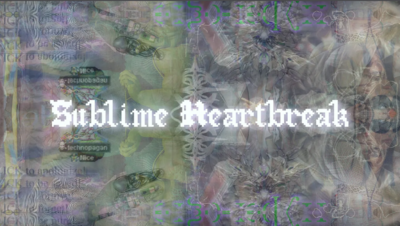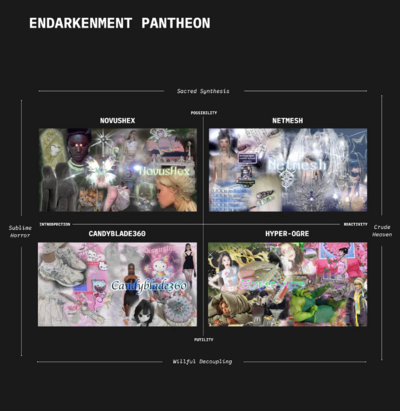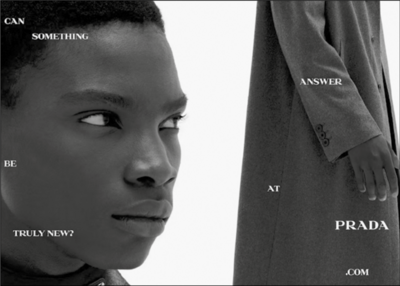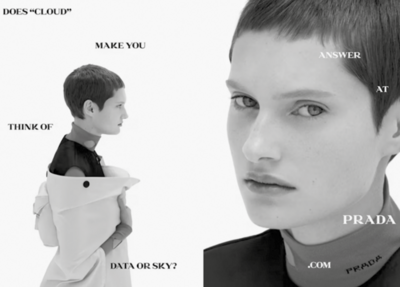[011]
Our aesthetic categories: Zany, Cute, Interesting
Individual
philosophy
The zany, the cute, and the interesting saturate postmodern culture. They dominate the look of its art and commodities as well as our discourse about the ambivalent feelings these objects often inspire. In this radiant study, Sianne Ngai offers a theory of the aesthetic categories that most people use to process the hypercommodified, mass-mediated, performance-driven world of late capitalism, treating them with the same seriousness philosophers have reserved for analysis of the beautiful and the sublime.
Ngai explores how each of these aesthetic categories expresses conflicting feelings that connect to the ways in which postmodern subjects work, exchange, and consume. As a style of performing that takes the form of affective labor, the zany is bound up with production and engages our playfulness and our sense of desperation. The interesting is tied to the circulation of discourse and inspires interest but also boredom. The cute's involvement with consumption brings out feelings of tenderness and aggression simultaneously. At the deepest level, Ngai argues, these equivocal categories are about our complex relationship to performing, information, and commodities.
Through readings of Adorno, Schlegel, and Nietzsche alongside cultural artifacts ranging from Bob Perelman's poetry to Ed Ruscha's photography books to the situation comedy of Lucille Ball, Ngai shows how these everyday aesthetic categories also provide traction to classic problems in aesthetic theory. The zany, cute, and interesting are not postmodernity's only meaningful aesthetic categories, Ngai argues, but the ones best suited for grasping the radical transformation of aesthetic experience and discourse under its conditions.
20.12.25
[014]
The User Condition: Computer Agency and Behaviour
Individual
critical
The User Condition is a micro-interactive essay on computer agency and behavior, and was developed within the 2020 research group organized by the Lectorate Design of KABK. What are the conditions for a computer user to gain agency, defined here as the ability to evade automatisms? What is the user’s horizon of autonomy within a built world made of software programmed by somebody else, when its logic is made inaccessible in the name of convenience?
20.12.25
[024]
Our Bodies, Online
Individual
social
What are the qualifications of being a feminist artist today? This is an impossible question, which is, in many ways, the point. One of the defining doctrines of third-wave feminism (or fourth-wave feminism, or postfeminism, or whatever you call our current moment) is its persistent unwillingness to be defined. Whether you make abstract photograms or stag films, label your work feminist, and it is.
“An emerging guard of young, female photographers has carved out a new brand of feminism
with a new set of definitions.”
20.12.25
[040]
Scroll, Skim, Stare
Individual
critical
This essay critiques the static nature of artists' websites, proposing that they could be more dynamic and innovative. Gat argues for these sites to function as online exhibition spaces, offering unique and creative ways to present and control art, enhancing the digital art experience.
Orit Gat’s essay “Scroll, Skim, Stare” in *The White Review* explores the evolving role of artists' websites in the contemporary digital landscape. Gat argues that while the internet has transformed art consumption, the design of artists' websites often remains static and uninspired. She suggests that these sites could be more dynamic, serving as online exhibition spaces that challenge the traditional gallery format. Gat emphasizes the potential for artists to leverage their websites to present and control their work uniquely and creatively, thus reshaping the visual culture of the internet.
20.12.25
[043]
A Reparative Approach to Publishing
Collaboration
The article "A Reparative Approach to Publishing" discusses Constant, a collective focusing on open-source, community-driven publications. Their projects include various forms of "executable texts" like manuals and codes, emphasizing collaborative creation and iterative processes. Platforms like Books With An Attitude and Constant Verlag host these works under open licenses. The piece highlights the importance of trust, collective authorship, and dynamic, editable content, advocating for a publishing practice that embraces change, diversity, and community involvement over individual genius and static texts.
It is part of MARCH's long term inquiry, "Publishing As Protocol", which aims to explore the relationship between self-organizational models and technological sovereignty. It gathers existing and speculative examples from both institutional (cultural) and technological (hacktivist) practices to reflect on how we publish, gather and organize under (and around) platform capitalism.
“A reparative, intersectional, and feminist approach to publishing means a networked approach, set up for working best when it is cared for by one or many communities.”
20.12.25
[047]
Sublime Heartbreak: Vectors for an Ending of Times
Individual
Speculative

Image by Elizabeth Gabrielle Lee

Endarkenment pantheon and its vectors: Possibility ⟷ Futility, Introspection ⟷ Reactivity. The intersection of these vectors (aka quadrants) give rise to aesthetic guilds. Image by Elizabeth Gabrielle Lee
This essay explores the concept of "Endarkenment," an aesthetic response to current global crises. Instead of apocalyptic destruction, Endarkenment finds beauty in chaos and decay. It contrasts traditional enlightenment, emphasizing engagement with darkness and complexity. Four aesthetic "guilds"—NovusHex, Netmesh, Candyblade360, and Hyper-ogre—illustrate different aspects of this concept, embracing both technological and primitive elements to find new forms of meaning and enchantment amid widespread despair and systemic failures.
The essay's concept of "Endarkenment" connects to how we experience fashion online by highlighting emerging digital aesthetics and trends that embrace chaos, complexity, and non-traditional beauty. Online fashion communities reflect this through styles like "indiesleaze" and "ratgirlsummer," which celebrate raw, unpolished looks, and "technomysticism" that merges spirituality with cybernetics. Platforms like Instagram curate these trends, showcasing designs that fuse nature with technology or embrace hyper-femininity and grotesque, anti-minimalist aesthetics. These digital movements redefine fashion by rejecting conventional norms and finding beauty in unconventional, dark, and chaotic expressions.
“I propose Endarkenment, an aesthetic posturing that’s emerging from the abyss of ultimate system failures and chronic mass despair. I’m not interested in a doomsday, pure-nihilistic dystopian narrative.”
20.12.25
[054]
The Balkanization & Babelification of the Internet
Collaboration
social
This essay explores the fragmentation of the internet, likened to the "Balkanization" and "Babelification" of online spaces. As the unified digital world splits into smaller, private communities, distinct languages and cultures emerge, leading to communication breakdowns when different groups interact. This splintering mirrors the biblical Tower of Babel story and poses challenges to shared understanding. The authors argue that deeper human connection, especially through physical touch, is essential to overcoming these divides and fostering genuine communication.
The essay's discussion of the internet's fragmentation can be linked to online fashion cultures, where digital spaces have become increasingly niche and isolated. Just as the internet splinters into distinct communities with their own languages and norms, fashion subcultures online—like streetwear, high fashion, or vintage—develop their own unique styles, terminologies, and identities. This fragmentation can both foster strong in-group connections and create barriers to broader communication and understanding between different fashion communities, mirroring the challenges of "Babelification."
“When we return to the public squares, it is not uncommon to think: what the hell is anyone saying? Imagine explaining what an 'Aesop Soap Guy' or a 'Sandy Liang Girlie' are to someone who isn't involved in that discourse.”
20.12.25
[055]
Welcome to the Swarm
Individual
social
On the internet, we are part of swarms: networks of people, bots, and content, coordinated through algorithmic feedback loops. Swarms spread misinformation, help each other, and represent the public. This is not our grandparents' crowd. Swarms are networks of people and information. They can act together without set rules. This research looks at different swarms, like the response to Hurricane María, to see how they work together. We also need to look at other online groups to understand swarms better. These groups have rules that make them easier to manage.
The concept of "swarms" can be connected to the online fashion landscape by considering how decentralized, collective behaviors emerge in digital spaces. In fashion, swarms can be seen in how trends develop, spread, and evolve without a centralized authority. Social media platforms, influencer culture, and digital communities act as nodes in a network where fashion trends are collectively shaped, shared, and adopted. These swarms enable rapid shifts in consumer preferences, allowing niche styles to become mainstream almost overnight, reflecting the fluid and adaptive nature of digital fashion ecosystems.
“In a swarm, the whole emerges from local interactions, with no central control or singular direction. This phenomenon can be seen in digital spaces where collective behaviors and patterns emerge organically, driven by the actions and decisions of individual participants.”
20.12.25
[060]
Fashion is not a Sign: Reading P.R.A.D.A. Theory-Fashion and Luxury Language
Individual
critical

Prada Spring/Summer 2021 campaign by Ferdinando Verderi. Courtesy of the photographer and Prada

Prada Spring/Summer 2021 campaign by Ferdinando Verderi. Courtesy of the photographer and Prada
“It is obvious enough why a clothing company might align itself with art or theory: to spritz its all-too-worldly wares with the air of intellect.”
20.12.25
[064]
A Rant About “Technology”
Individual
critical
In A Rant About Technology, Ursula K. Le Guin explores society's near-obsession with technology, suggesting that we often glorify new gadgets and tools at the expense of deeper human values such as creativity, compassion and wisdom. She argues that while technology can be helpful, we should question its role and avoid making it a substitute for meaningful, humane experiences. Le Guin advocates a balanced perspective, encouraging us to value technology without allowing it to define or control us.
““Technology” and “hi tech” are not synonymous, and a technology that isn't “hi,” isn’t necessarily '“low” in any meaningful sense.”
20.12.25
[066]
Moodbored
Individual
critical
Olivia Linnea Rogers explores the rise of digital mood boarding as a modern form of identity exploration and creative expression. Originally physical collages, mood boards have evolved online, becoming aspirational but intangible collections of lifestyle aesthetics. It reflects on how images once rare and precious are now curated endlessly on platforms like Pinterest, shaping identity through associations with unattainable ideals. Rogers suggests mood boarding reflects consumerism, escapism, and a desire for curated self-expression, raising questions about authenticity in digital self-construction.
“There is no place for self-actualisation like the Internet. To put on and take off identities, personalities, interests, and styles with no cost at all and by simply lifting a pointer finger. This has generally been considered an advantage of the Internet. I’d argue it is not. It feeds an instinct that has been trained in us from marketing executives. You can create a “self” and a “space” for that self, with none of it being real at all.”
20.12.25
[067]
The Side Hustle in Your Closet
Individual
critical
Scarabelli explores the rise of 'virtual shopping' on resale platforms such as eBay, Poshmark and Grailed, which allow users to engage in 'digital window shopping'. The ability to save items to wish lists and shopping carts allows us to create a curated collection of items we may never buy, transforming consumption into an imaginative, almost aspirational experience. The essay highlights the ways in which resale platforms mimic social media, encouraging not only purchases but also the creation of online identities through saved designer goods and mood boards - ultimately embedding subliminal modes of consumption into digital habits, while blurring the lines between physical and virtual consumption.
“In the world of recommerce, virtual shopping is the new consumerism that everyone can afford. [..] Virtual shopping exists within a liminoid space, what cultural theorist Rob Shields defines as a meeting point of the imaginary and the material.”
20.12.25
[087]
Creating Feminist Paths with Mood Boards
Individual
pedagogy
In Creating Feminist Paths with Mood Boards, Floriane Fo Misslin opens up a path toward an intersectional feminist citational practice for visual references. The essay rethinks mood boards—often dismissed as simple inspiration tools—as sites for thoughtful and politically engaged feminist work. Misslin shows how they can map connections, surface overlooked voices, and challenge dominant narratives in design and education. Through intentional curation, mood boards become spaces for reflection, citation, and imagination—offering ways to practice solidarity, build collective knowledge, and foster more inclusive and critical modes of working, especially in creative and pedagogical contexts.
Misslin’s feminist expansion of the mood board as a citational tool is a much-needed intervention in fashion, where visual referencing often goes unacknowledged or uncredited. The work draws urgent attention to how inspiration circulates—and how it might be redirected toward more ethical, inclusive, and reflexive practices. In a field that frequently celebrates aesthetics without interrogating power, this approach offers a critical perspective on citation as both visual and political. It urges fashion practitioners to trace their influences with care and to reimagine how knowledge is shared.
“Where does authorship begin? Is a bibliography—or a set of visual references—intellectual property?”
20.12.25



